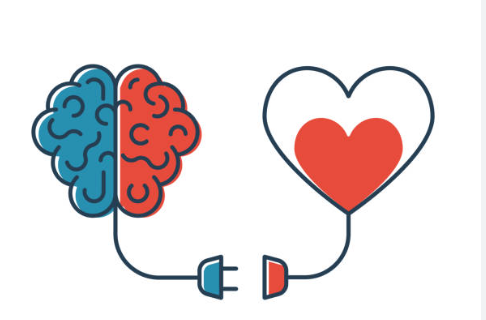In my last blog, I wrote about being one’s authentic self, and for me, that means leading my operations with both my head and heart. Building trust and loyalty along the way, I’ve come to realize the significance of leading with both rationality and empathy. Traditionally, leadership was centered around logical decision-making based solely on analysis and facts. However, the integration of emotional intelligence and compassion has emerged as a crucial factor in achieving professional success. In this blog, I aim to explore the concept of leading with your head and heart at work and how this powerful combination can foster a positive work environment, drive success, and inspire teams.

In my last blog, I wrote about being one’s authentic self, and for me, that means leading my operations with both my head and heart. Building trust and loyalty along the way, I’ve come to realize the significance of leading with both rationality and empathy. Traditionally, leadership was centered around logical decision-making based solely on analysis and facts. However, the integration of emotional intelligence and compassion has emerged as a crucial factor in achieving professional success. In this blog, I aim to explore the concept of leading with your head and heart at work and how this powerful combination can foster a positive work environment, drive success, and inspire teams.
Understanding the Head
Leading with your head refers to utilizing your intellect, rationality, and analytical thinking to make informed decisions. It involves objective analysis, strategic planning, and critical thinking. Here are a few key points to consider when leading with your head:
- Strategic Vision: Leaders must develop a clear vision for their organization or team. This vision should align with the overall objectives and goals, guiding the team toward success. Strategic thinking allows leaders to anticipate challenges, identify opportunities, and develop effective plans.
- Data-Driven Decision Making: By gathering and analyzing relevant data, leaders can make informed decisions that minimize risks and maximize outcomes. Utilizing facts and figures helps leaders to see the bigger picture and make well-thought-out choices.
- Problem-Solving Skills: Leaders who use their heads excel in problem-solving. They approach challenges objectively, break them down into smaller parts, and seek innovative solutions. They encourage their teams to think critically and contribute ideas to tackle complex problems.
Embracing the Heart
Leading with your heart involves tapping into your emotional intelligence, empathy, and compassion. It recognizes the value of connecting with others deeper and understanding their needs and motivations. Here are some ways to embrace the heart:
- Emotional Intelligence: Leaders with high emotional intelligence understand and manage their emotions effectively. They are also skilled at recognizing and empathizing with the emotions of others. Leaders can create a positive work environment that promotes trust, collaboration, and open communication by cultivating emotional intelligence.
- Empathy and Compassion: Great leaders demonstrate empathy and compassion towards their team members. They actively listen, show understanding, and consider the perspectives and feelings of others. Leaders build solid relationships and inspire their teams to perform at their best by fostering a culture of empathy.
- Authenticity: Leading with the heart involves being authentic and genuine. Leaders who show vulnerability and transparency create an environment where others feel safe to express themselves and take risks. Authentic leaders build trust, inspire loyalty, and encourage creativity and innovation.
The Power of Integration
When leaders combine their heads’ rationality with their hearts’ emotional intelligence, they unlock a powerful force that drives success and fosters a positive work environment. Here’s how the integration of head and heart can benefit leaders and their teams:
- Inspiring Leadership: Leaders inspire and motivate their teams by leading with both their heads and heart. They provide clear direction, communicate effectively, and create a sense of purpose. Employees feel valued, empowered, and engaged, increasing productivity and satisfaction.
- Resilience and Adaptability: Leaders who balance logic with empathy are better equipped to navigate challenges and uncertainties. They can make tough decisions while considering the impact on individuals. This balanced approach fosters resilience and helps teams adapt to change more effectively.
- Stronger Relationships: Integrating head and heart enables leaders to build stronger connections with their team members. Leaders can create a culture of trust and collaboration by understanding individual motivations, providing support, and recognizing achievements. Strong relationships lead to increased loyalty, employee satisfaction, and retention.

